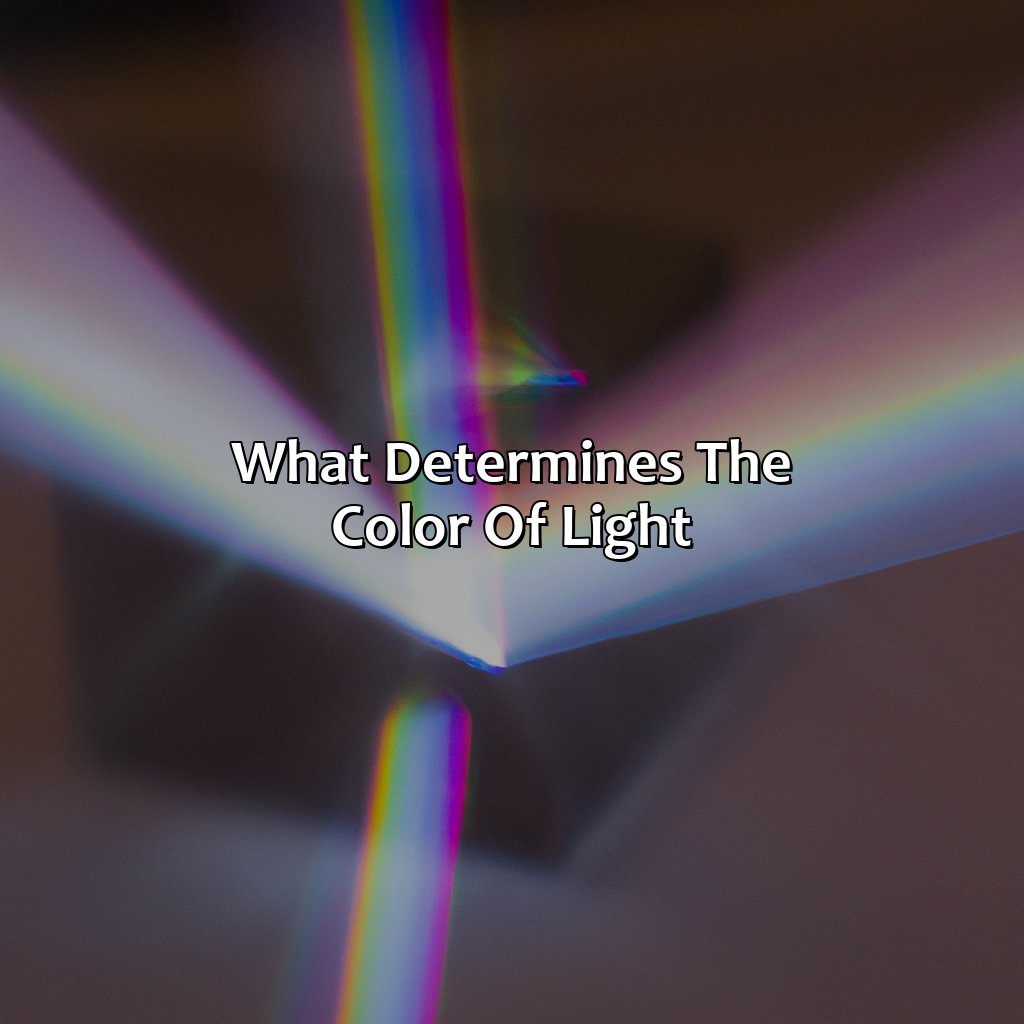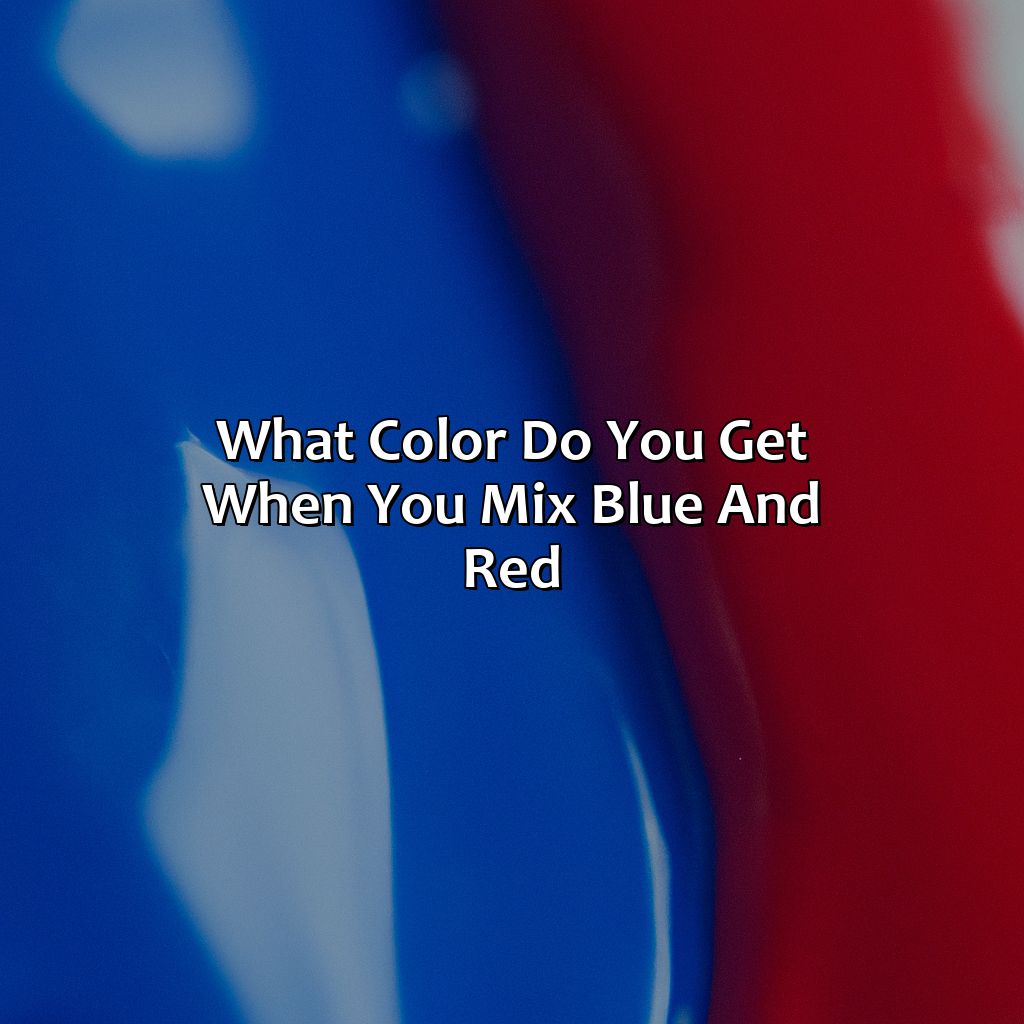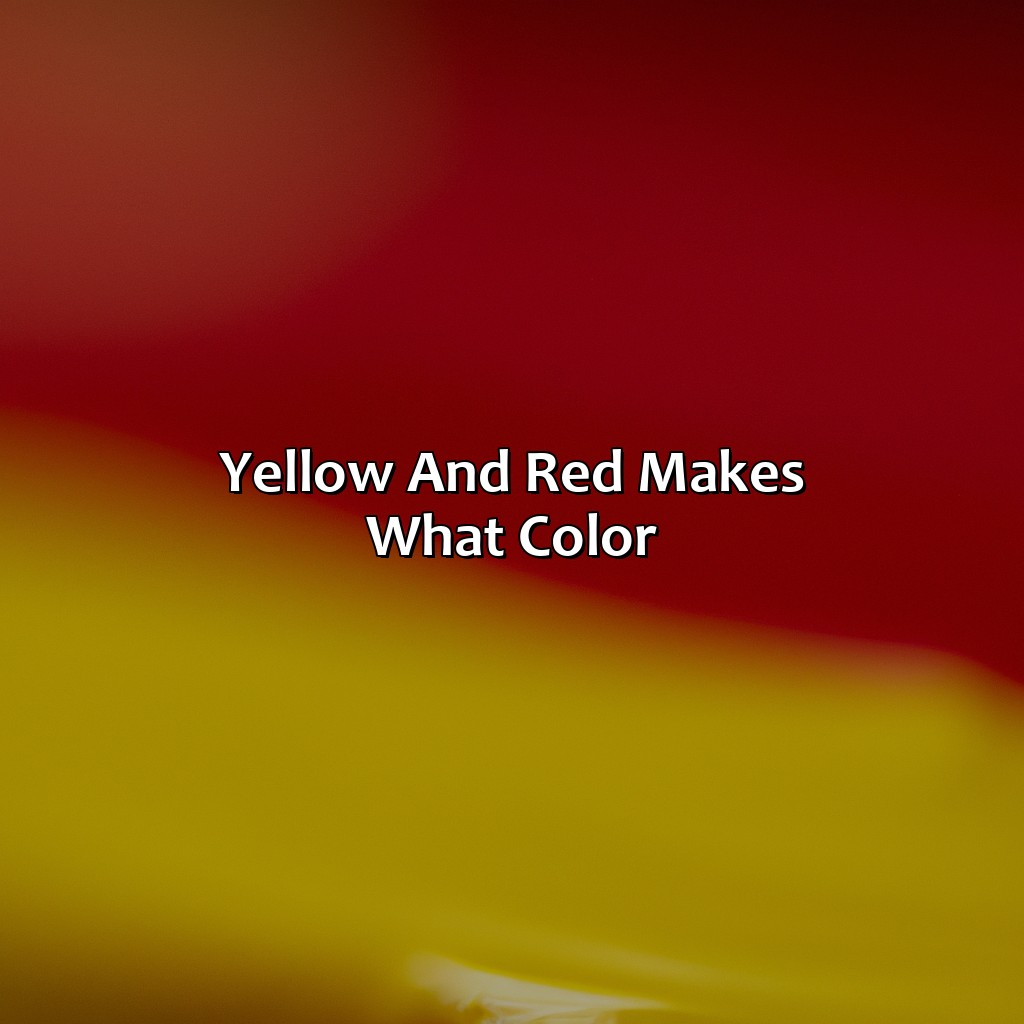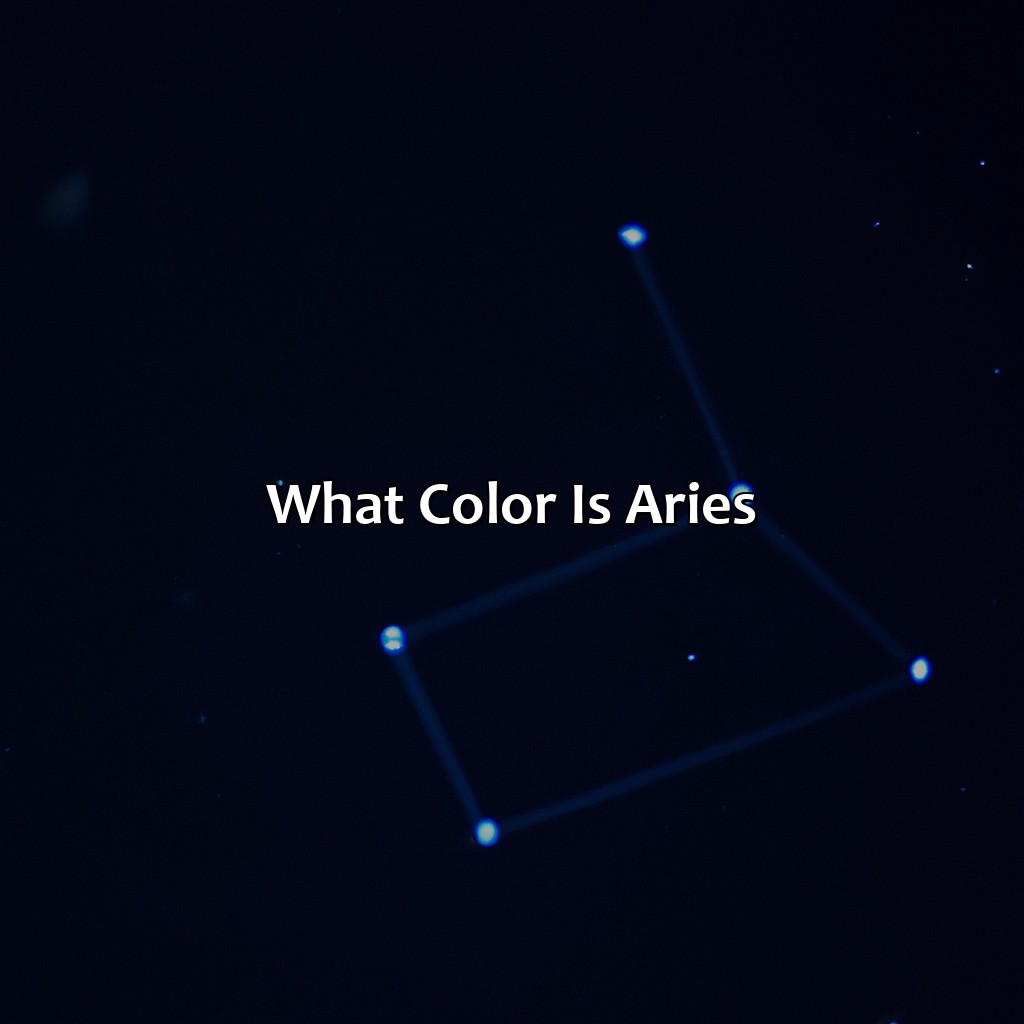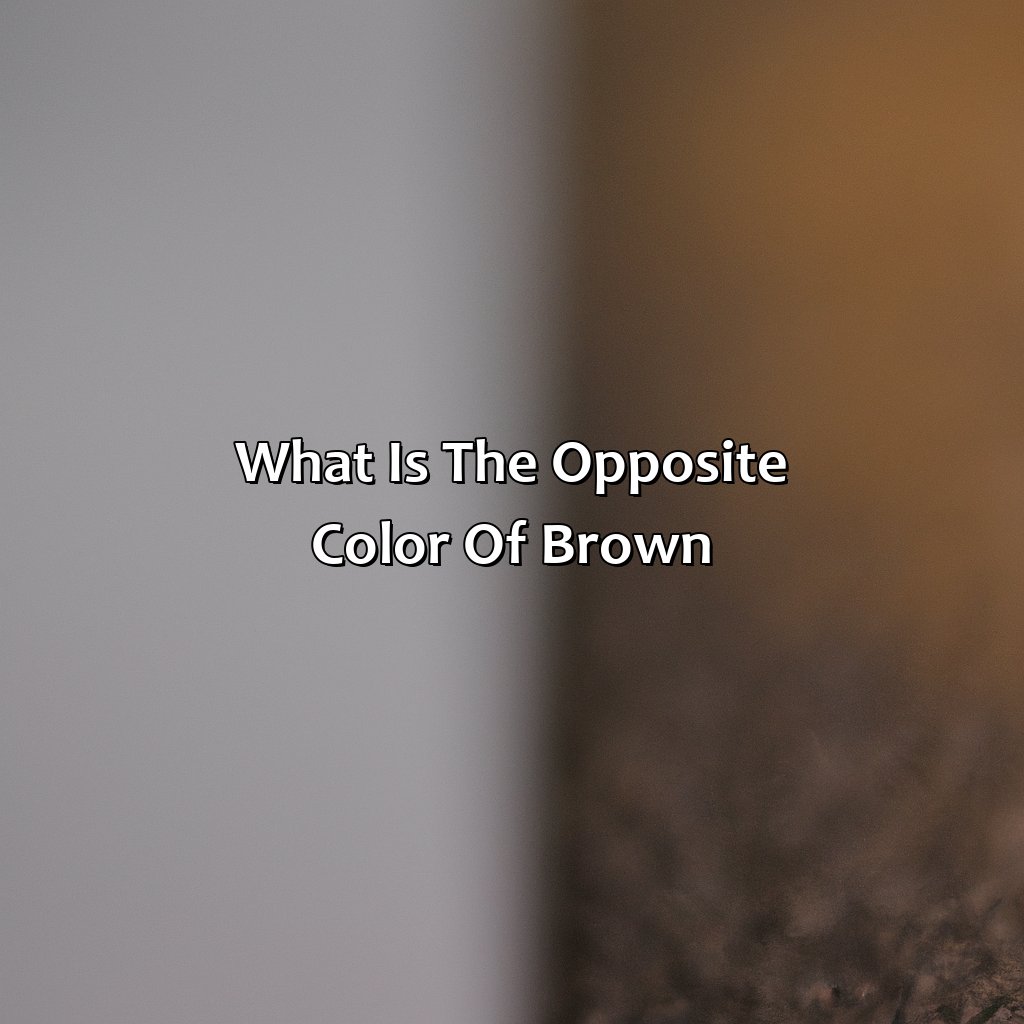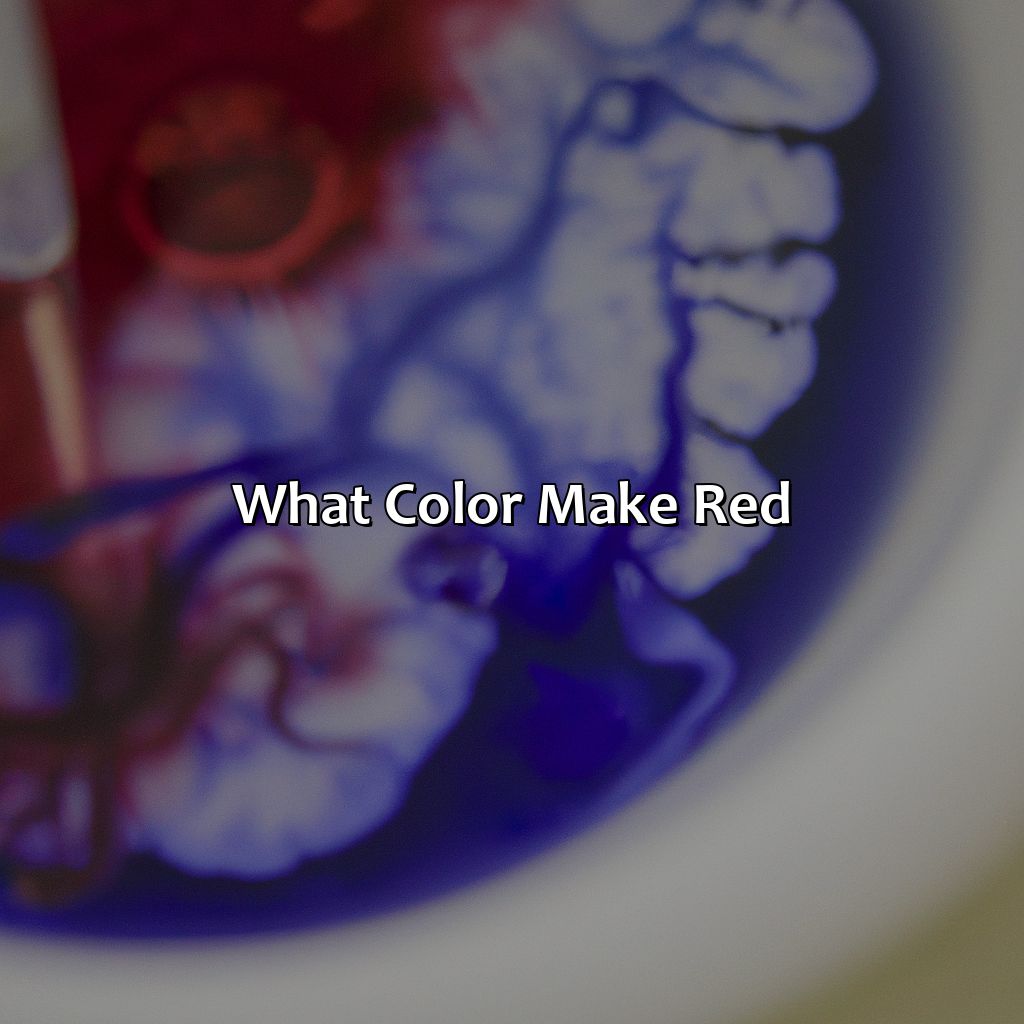Key Takeaways:
- The color of light is determined by the wavelength of the light, which is perceived by the human eye as colors ranging from violet to red.
- The production of light by excitation depends on the energy level and structure of the atoms or molecules involved.
- The emission spectrum of a light source, the absorption spectrum of a medium, and the scattering of light are factors that determine the color of light.
How Light is Produced

Photo Credits: colorscombo.com by Bobby Brown
To understand how light is produced, let’s explore the topic “What Determines the Color of Light“. It covers Electromagnetic Radiation, Production of Light by Excitation, and The Spectrum of Light. We can learn about electromagnetic radiation and how excited atoms emit light. Plus, the range of the light spectrum is shown.
Explanation of Electromagnetic Radiation
Electromagnetic radiation occurs when electric and magnetic fields fluctuate in a particular pattern. This pattern produces waves known as electromagnetic waves, of which light is one type. The explanation of electromagnetic radiation involves an understanding of the behavior of charged particles like electrons, which can produce these waves when they accelerate. The resulting EM waves propagate through space at the speed of light and carry energy and information.
One aspect of the explanation of electromagnetic radiation is that it encompasses a wide range of frequencies, from low-frequency radio waves to high-frequency gamma rays. Light occupies only a small part of this spectrum, between ultraviolet and infrared radiation. The production of light by excitation occurs when an atom or molecule absorbs energy from an external source like heat or electricity and then emits it as light.
Additional details about the explanation of electromagnetic radiation include its interaction with matter, where it can be absorbed, scattered or transmitted depending on the properties of the medium. Moreover, various types of instruments like telescopes, cameras, and spectroscopes rely on our understanding of EM radiation to function correctly.
It’s worth noting that the explanation for electromagnetic radiation has undergone significant changes over time. Early theories proposed that light propagated as a particle-like nature while others suggested wave-like behavior. With increased scientific research and experimentation, scientists realized that both particle and wave theories were necessary to explain different phenomena accurately. Today scientists view electromagnetic radiation as having dual natures – wave-particle duality.
In summary, although it may seem straightforward at first glance, explaining electromagnetic radiation requires deep knowledge and insights into atomic structures and their behaviors in differing environments. Together with concepts relating to physics such as quantum mechanics’ theory coupled with photonic emission results in modern science being able to provide color materials applications such as photography, art, lighting design along with other multiple industries supported from just knowing explanation for electromagnetic radiation. Electrons get excited by energy and produce light, it’s like a party in the atom.
Production of Light by Excitation
Light is produced through various mechanisms. One of the ways, known as Production of Light by Excitation occurs when a material’s electrons are excited to higher energy levels, due to external energy sources such as heat or electricity, causing them to emit photons. This phenomenon is called luminescence.
During this process, certain atoms absorb energy in specific wavelengths or frequencies that correspond to their energy states. When these excited atoms return to their ground state, they release this excess energy in form of photons that fall within a specific range of wavelengths based on the atom’s property. The light generated could be visible or non-visible depending on the amount and type of excitation.
The production of light via excitation falls under a larger topic- photoluminescence where “photo” refers to light and “luminescence” denotes emission. In this process, external stimuli such as heat or radiation cause molecules within the material to get charged-up since the excitation energies with which they are bombarded exceed those typical for thermal equilibria levels resulting in the emission of light.
Historically, there have been different archeological pieces of evidence showcasing photoluminescence’s use like Bronze Age bracelets made out of calcium carbonate (a luminous mineral), firefly lanterns whose bioluminescent capabilities were being utilized for illumination purposes before electricity was discovered and harnessed.
Understanding how light is produced is crucial because it allows us to better grasp our environment’s behaviour and design technologies that provide fundamental necessities like illuminated roads during night-time drives or even fieldwork in industries where we study fluorescence and phosphorescence phenomena offering important insights into genetics research for cancer detection and treatments amongst others along with many other practical applications – including photography, artistry or color science!
Turns out, light has more colors than your ex’s new hairdo – we’re talking about the spectrum of light.
The Spectrum of Light
The spectrum of light is a range of electromagnetic radiation that is visible to the human eye. The spectrum is divided into different colors that are distinguished by their respective wavelengths and frequencies.
| Color | Wavelength Range (nm) |
|---|---|
| Violet | 380-450 |
| Blue | 450-495 |
| Green | 495-570 |
| Yellow | 570-590 |
| Orange | 590-620 |
| Red | 620-750 |
The different colors in the spectrum of light can be observed through a prism or rainbow, where they are separated based on their differing wavelengths. This phenomenon is called dispersion.
Interesting to note is that, since white light contains all the colors in the spectrum, it is possible to separate it into its constituent parts by creating a prism effect.
Pro Tip: Different types of lighting used for indoor spaces have a varying degree of effects over different skin tones; hence knowing about ‘the spectrum of light’ becomes important while choosing the appropriate lighting for your indoors and color correction in photography.
Light is like Schrodinger’s cat, it’s both a wave and a particle until we observe it.
The Nature of Light

Photo Credits: colorscombo.com by Tyler Jackson
Gaining insights into the unique properties of light requires exploring the wave theory, particle theory and dual nature. To do this, delve into the sub-sections. Each will explain a different theoretical perspective on light. Scientists have proposed different explanations to understand them. Understanding the fundamental nature of light is the goal.
Wave Theory of Light
Light can be described by the wave theory of light. The wave theory hypothesizes that light travels in waves, similar to sound waves, and that those waves can interfere with each other. These interferences can lead to phenomena such as diffraction, reflection, and refraction. Furthermore, the course of a wave of light can be altered when it moves into materials with different refractive indexes.
This theory was initially proposed by Huygens in 1690 and later supported by Thomas Young’s research on interference patterns in 1801. The wave theory also explains the property of polarization.
The wavelength is an essential factor when measuring the properties of light according to this theory. The distance between two points at identical positions on adjacent waves is referred to as wavelength; therefore, shorter wavelengths have more energy than longer wavelengths.
In summary, the wave theory of light provides us with essential knowledge about the nature of light and how it interacts with different mediums. It has immensely contributed to our understanding of various phenomena like polarization and interference patterns in prisms.
Even light can’t decide whether it wants to be a wave or a particle, making the Particle Theory of Light a confusing yet fascinating topic.
Particle Theory of Light
Particles Theory of Light refers to the concept that light can also be explained as particles called photons. According to this theory, light consists of tiny packets of energy that travel at high speed through space. These photons have no mass, but they do possess momentum and energy.
The Photon Theory of Light states that a particle of light can exhibit wave-like behavior. Photons don’t have a fixed position until they are measured or observed, hence displaying characteristics of both particles and waves.
Particle theory was first introduced by Albert Einstein in 1905 through his work on the photoelectric effect. It explained how electrons were emitted from metal when exposed to light with sufficient energy. He suggested that the energy was transferred in discrete units known as photons and that their energy increased proportionally with frequency.
In the mid-20th century, this theory paved the way for the development of quantum mechanics as a means to better understand phenomena like wave-particle duality and uncertainty principles.
It is interesting to note that current technological advancements like lasers, optical fibers, and solar cells rely on knowledge derived from particle theory. The theory also helped in understanding spectroscopy, allowing us to analyze material compositions through absorption spectra.
Light behaves like both waves and particles, reminding us that not everything is black and white, but sometimes a little bit of both.
Dual Nature of Light
Light has a dual nature, which can be explained by both wave and particle theories. The wave theory considers light as a transverse electromagnetic wave that propagates through space. Meanwhile, the particle theory proposes that light behaves like a stream of particles called photons. According to the dual nature of light, it can exhibit behaviors of both waves and particles depending on the context of the experiment.
Researchers have demonstrated that photons can exhibit both particle-like and wavelike properties in numerous experiments, such as the double-slit experiment. In this experiment, photons produce an interference pattern similar to how waves interfere with each other when passing through two small slits. This phenomenon demonstrates how light can act like a wave under certain conditions and like particles under other situations.
Furthermore, scientists have proposed that electrons also demonstrate dual nature. According to quantum mechanics’ theory, matter behaves as both waves and particles simultaneously from microscopic objects such as electrons up to macroscopic objects. It is quite fascinating how while these theories are difficult for us to understand conceptually, they help drive research worldwide towards scientific discoveries to understand our world better.
One interesting fact related to this topic comes from Max Planck’s discovery during his research into blackbody radiation in 1900. Planck discovered that energy was not contained in any level but instead came in discrete bundles called quanta or now known as photons — hence why the study of science is so fascinating!
Seeing is believing: exploring the perception of color through the visible light spectrum and its relationship to wavelength.
Color of Light

Photo Credits: colorscombo.com by Kevin Wright
For a deep understanding of the color of light, one must become familiar with the basic concepts. To dive into the explanation, here are the sub-sections which will answer your questions. These sub-sections are:
- Perception of Color by Human Eye
- Visible Light Spectrum
- Relationship Between Color, Wavelength, and Frequency
Perception of Color by Human Eye
The way the human eye perceives color is a fascinating aspect of vision and an important consideration in fields such as art, photography, and lighting design. Color perception is based on the range of wavelengths of light that can be detected by the eye’s photoreceptor cells, which are sensitive to red, green, and blue light. When these cells are stimulated by different combinations of wavelengths, our brains interpret the signals as different colors. This process results in a vast spectrum of hues that we experience in the world around us.
Get ready to bask in the rainbow of light that our eyes can perceive with the visible light spectrum.
Visible Light Spectrum
The spectrum of light visible to the human eye is known as the visible light spectrum. It consists of a range of wavelengths, each with its own spectral color. The spectrum ranges from violet (shortest wavelength) to red (longest wavelength), with blue, green, yellow, and orange in between.
For example, when white light passes through a prism, it is refracted and separated into its constituent colors, forming a continuous and smooth spectrum ranging from violet to red. The colors can be seen on a rainbow or on a color wheel.
Each color in the visible light spectrum has its own unique wavelength and frequency. Violet has the shortest wavelength and highest frequency while red has the longest wavelength and lowest frequency.
To see the full spectrum of colors in natural sunlight or artificial lighting, one can use a diffraction grating or prism to separate out the different colors. Understanding the visible light spectrum is essential in various fields such as photography, art, and lighting design.
Discover how the length and speed of light waves impact the colors we see in the visible light spectrum.
Relationship between Color, Wavelength, and Frequency
The interrelation between color, wavelength, and frequency is essential to understand the characteristics of light. The color of light is determined by its wavelength—the distance around which a wave travels in one cycle—and frequency—the number of cycles completed in a second.
| Color | Wavelength (nm) | Frequency (Hz) |
| Violet | 400-450 | 7.5 x 10^14 – 6.7 x 10^14 |
| Blue | 450-490 | 6.7 x 10^14 – 6.1 x 10^14 |
| Green | 490-575 | 6.1 x 10^14 – 5.2 x 10^14 |
| Yellow | 575-585 | 5.2 x 10^14 – 5.1 x 10^14 |
| Red | 620-750 | 4.8 x 10^14 – 4.0 x 10^14 |
It’s vital to mention that violet has the highest frequency and the shortest wavelength; on the other hand, red color has long wavelengths but lower frequency than blue or green colors.
Additionally, our eyes perceive different colors based on how they absorb or reflect light at distinct wavelengths and frequencies.
Understanding the relationship between color, wavelength, and frequency helps designers create visuals or even select lighting designs for their specific purpose best efficiently.
Don’t miss out on appreciating the beauty of nature by taking time to analyze and understand how these external factors interplay each other. From the atomic level to atmospheric effects, the factors influencing the color of light include emission spectrum, absorption spectrum, and scattering.
Factors Determining Color of Light
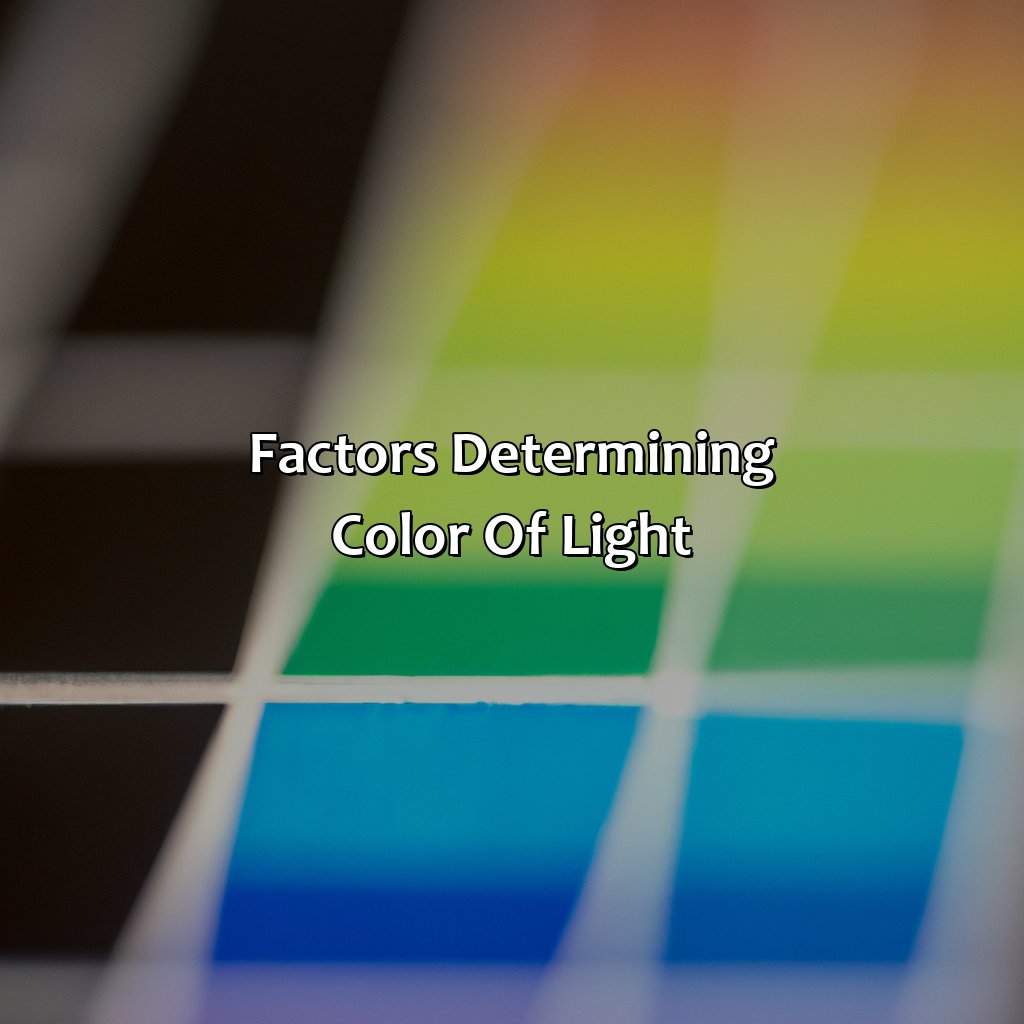
Photo Credits: colorscombo.com by David Harris
To comprehend what picks the color of light, you need to know the emission spectrum, absorption spectrum and scattering. It all depends on the source of light and the medium it goes through. This section explains these factors more, like the emission spectrum of the light source, the absorption spectrum of the medium, and the scattering of light.
Emission Spectrum of Light Source
Light sources emit different colors of light, which form the emission spectrum of the source. This spectrum is dependent on the type of light emitted by the source, which can be deduced through spectral analysis.
| Light Source | Emission Spectrum |
| Sunlight | Continuous Spectrum |
| Incandescent Light Bulbs | Continuous Spectrum with some missing wavelengths |
| Fluorescent Light | Line Spectrum with discrete peaks at specific wavelengths |
The emission spectra of light sources provide valuable information regarding their compositions and characteristics. Analysis of these spectra is crucial in fields like astronomy, where it helps determine the composition and movements of celestial bodies.
In studying the emission spectrum of a light source, one must take into account its temperature and chemical composition to understand its color distribution.
I once observed a high-resolution emission spectrum in a laboratory experiment where we used spectroscopy to identify the elements present in sample solutions based on their unique emission lines.
Absorption spectrum of medium: where light goes to die and colors disappear.
Absorption Spectrum of Medium
When light passes through a medium, it interacts with the atoms or molecules in that medium. This interaction results in the absorption of certain wavelengths of light, while others pass through unaffected. The specific wavelengths of light that are absorbed by a particular medium create what is known as the absorption spectrum of that medium.
To better understand this phenomenon, we can look at a table displaying an example of the absorption spectrum of water. The table would show the wavelength range from 200 to 800 nanometers (nm) and display how much percent transmittance is recorded for each wavelength falling within this range. For instance, at a wavelength around 200 nm, only 1% transmittance is observed as water absorbs most Ultraviolet (UV) light in this region. Moreover, at around 400 nm, about 96% transmitted as it corresponds to blue-green light which isn’t much absorbed by water.
The absorption spectrum of medium helps in determining which colors will appear muted or changed when passing through it. Light sources used in photography and art often have emission spectra that can manipulate coloration based on how they interact with specific mediums.
Pro Tip: Understanding the absorption spectrum of mediums helps lighting designers decide which materials to use in order to achieve desired optical effects such as hue shifts and vibrancy alteration in artworks and photographs.
When light gets scattered, it’s like a chaotic party where different colors show up uninvited.
Scattering of Light
When the light travels through a medium, some of its energy is absorbed or scattered in different directions. This phenomenon is known as the Scattering of Light. The scattering process can cause the deviation of the light from its path and leads to a distribution of light energy across different wavelengths. This effect is responsible for many natural phenomena, including optical illusions and atmospheric phenomena.
Scattering of Light depends on various factors, such as particle size, refractive index, and wavelength of light. When the size of particles in a medium is larger than the wavelength of incident light, it results in Mie Scattering. On the other hand, Rayleigh Scattering occurs when particles are smaller than the wavelength of incident light.
Interestingly, scattering plays a vital role in determining the appearance of natural phenomena such as sunsets and rainbows. During sunsets, scatterings interact with oxygen and nitrogen molecules to create beautiful hues spread across the sky. Similarly, rainbows are formed when sunlight passes through water droplets in the atmosphere.
Research shows that understanding scattering has led to countless technological advancements such as fiber-optic communication systems and advanced imaging technologies.
Source: ScienceDaily
From capturing the perfect shot in photography to setting the mood in lighting design, understanding the color of light is crucial in the world of art and design.
Applications of Understanding Color of Light
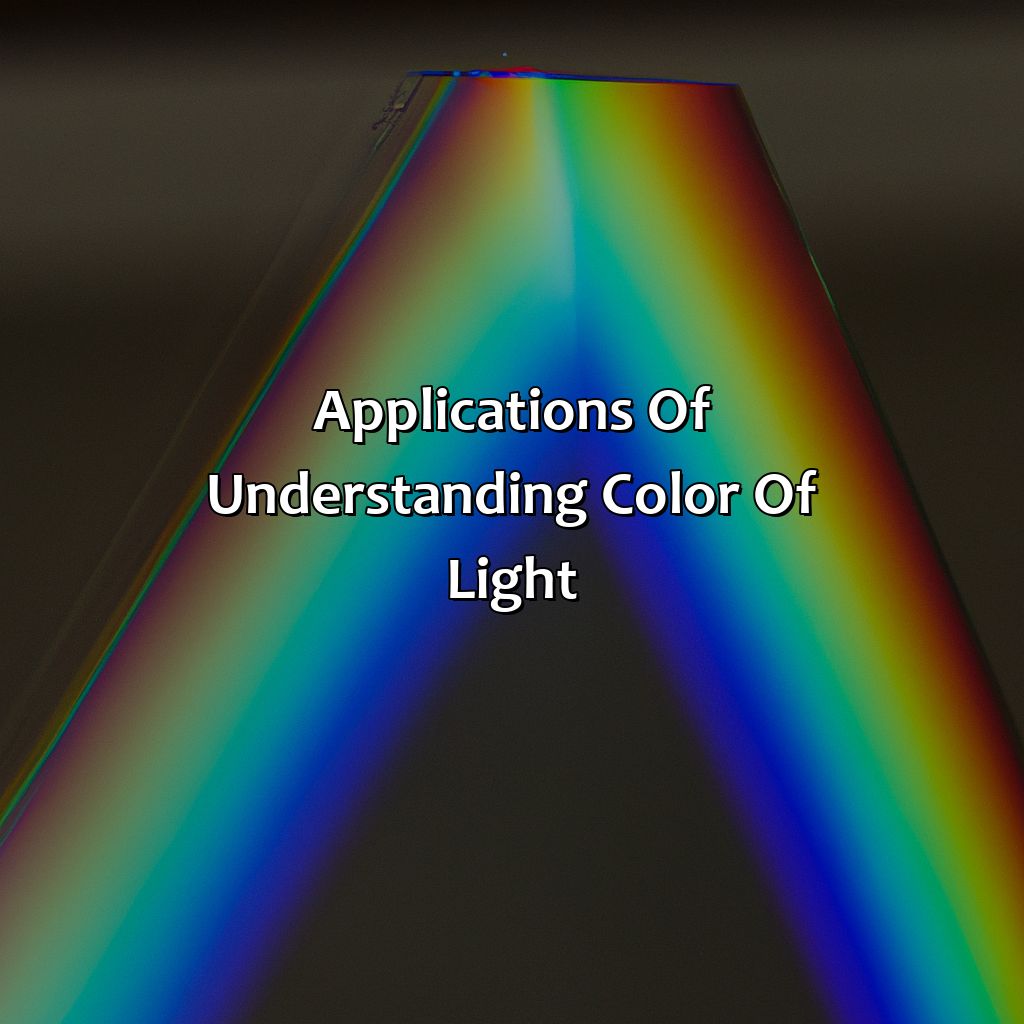
Photo Credits: colorscombo.com by Jason Anderson
Understand the color of light and apply it! See how it works in photography, art, and lighting design. Each offers different solutions to using light’s color. Photography, art, and lighting design can all benefit.
Color in Photography
Capturing the right color in photography is crucial to an impactful photograph. Understanding the science of color and how it interacts with light can help photographers create the desired mood and tone in their images. This involves knowledge of not only the visible spectrum of light but also the effects of different sources of light such as natural, incandescent, fluorescent, and LED lights.
Additionally, color temperature plays a significant role in photography. It refers to the warmth or coolness of white light that ranges from orange-yellow (warm) to blue-white (cool). This concept is often used by photographers to create different moods within their photographs or to correct color cast issues.
Moreover, post-processing tools like Adobe Photoshop offer a vast range of features to adjust and manipulate colors at different levels, including hue, saturation, contrast, brightness, and others.
Understanding the impact of lighting on colors is essential for professional photographers who strive to capture an authentic portrayal of their subjects. Therefore, knowledge about color and its relation to light is critical for creating evocative images that stand out.
Don’t miss out on capturing mesmerizing moments with inadequate color representation; educate yourself on color in photography today.
Artists have been playing with the color of light for centuries, reminding us that life is not just black and white.
Color in Art
Color plays a vital role in every form of artistic expression, be it painting, sculpting, or drawing. Artists use color to convey emotion, mood, and atmosphere in their works. The hues and shades that they choose not only represent the subject matter but also communicate the artist’s perspective on it. With the vast array of colors available, artists have a large degree of flexibility in bringing their ideas to life on canvas.
In art, color can either be used for its symbolic value or as an interpretive element. For instance, red is often associated with passion and vitality while blue is linked with calmness and serenity. Likewise, neutral tones like grey or beige create a sober and muted effect while bright splashes of yellow or orange lend vibrancy and energy to a piece.
It is noteworthy that although perceptions of color are subjective by nature because individuals associate shades with certain feelings or emotions tied to culture and personal experiences; certain aspects stay constant when studying color scientifically.
Artists must pay attention to technical factors such as light source choice on their paintings as it affects the tone infused in the picture. They have to study how objects reflect different degrees of light onto another surface before deciding what hue should paint each object.
There exists more depth into the art world than meets the human eye. Therefore you may find yourself captivated by an artwork not just because of its subject but also how it came together through visual cues like mixtures of different hues – this intentional blending arrangements can affect how people react viewing the artwork collectively.
Choosing the right color temperature for your lighting design can set the mood and tone of the space, so don’t be afraid to play with hues.
Color in Lighting Design
The utilization of different colors of light is an essential aspect of lighting design. By incorporating various hues, the ambiance can be transformed and manipulated to evoke different emotions or achieve specific goals. The selection and use of appropriate colors in lighting design can create significant impacts on both indoor and outdoor environments.
Color in lighting design has been widely used in entertainment events such as concerts, theatre performances, and live shows. The use of changing colors creates a dynamic effect that captivates the audience while highlighting the performers’ location on stage. These effects are also common in clubs, museums, and theme parks.
Lighting color plays an equally important role in architecture as it contributes to enhancing spaces’ aesthetic appeal. Lighting designers strategically incorporate different hues to highlight architectural details or spaces such as lobbies, restaurants, ballrooms, or hotel rooms. This art of color manipulation plays a crucial role in improving the guest experience.
Color in lighting design is also significant for commercial applications. Retail shops often make use of warm yellow hues in their display windows to create inviting atmospheres that attract shoppers. Similarly, restaurants often incorporate red and blue tones into their branding to create unique identities while promoting distinct moods.
Five Facts About What Determines the Color of Light:
- ✅ The frequency of light waves determines its color, with higher frequency waves appearing as violet and lower frequency waves appearing as red. (Source: Live Science)
- ✅ The color of light can also be affected by its wavelength, with shorter wavelengths appearing as blue and longer wavelengths appearing as red. (Source: Science Learning Hub)
- ✅ Objects absorb certain colors of light while reflecting others, which is what gives them their perceived color. (Source: Scientific American)
- ✅ The color of light can also be influenced by its source, such as sunlight appearing as white but taking on reddish or bluish tints during different times of day. (Source: National Geographic)
- ✅ Human perception plays a role in determining the color of light, as differences in individual color vision and lighting conditions can affect how we interpret color. (Source: The Conversation)
FAQs about What Determines The Color Of Light?
What determines the color of light?
The color of light is determined by its wavelength. Longer wavelengths appear red, while shorter wavelengths appear blue or violet.
Can the color of light change?
Yes, the color of light can change depending on its source, the medium it travels through and its interaction with other wavelengths of light.
What is the electromagnetic spectrum?
The electromagnetic spectrum is a range of electromagnetic waves that includes all forms of electromagnetic radiation, from radio waves to gamma rays.
How do we see colors?
We see colors when light rays enter our eyes and strike the retina. The cells in the retina then transmit signals to the brain, which interprets the signals as certain colors.
Can color perception vary between individuals?
Yes, color perception can vary between individuals due to differences in the number and types of color receptors in their eyes, as well as differences in the brain’s interpretation of the signals received from those receptors.
Why do objects appear different colors?
Objects appear different colors depending on the wavelengths of light they absorb and reflect. For example, a red object appears red because it reflects red light and absorbs other colors.
